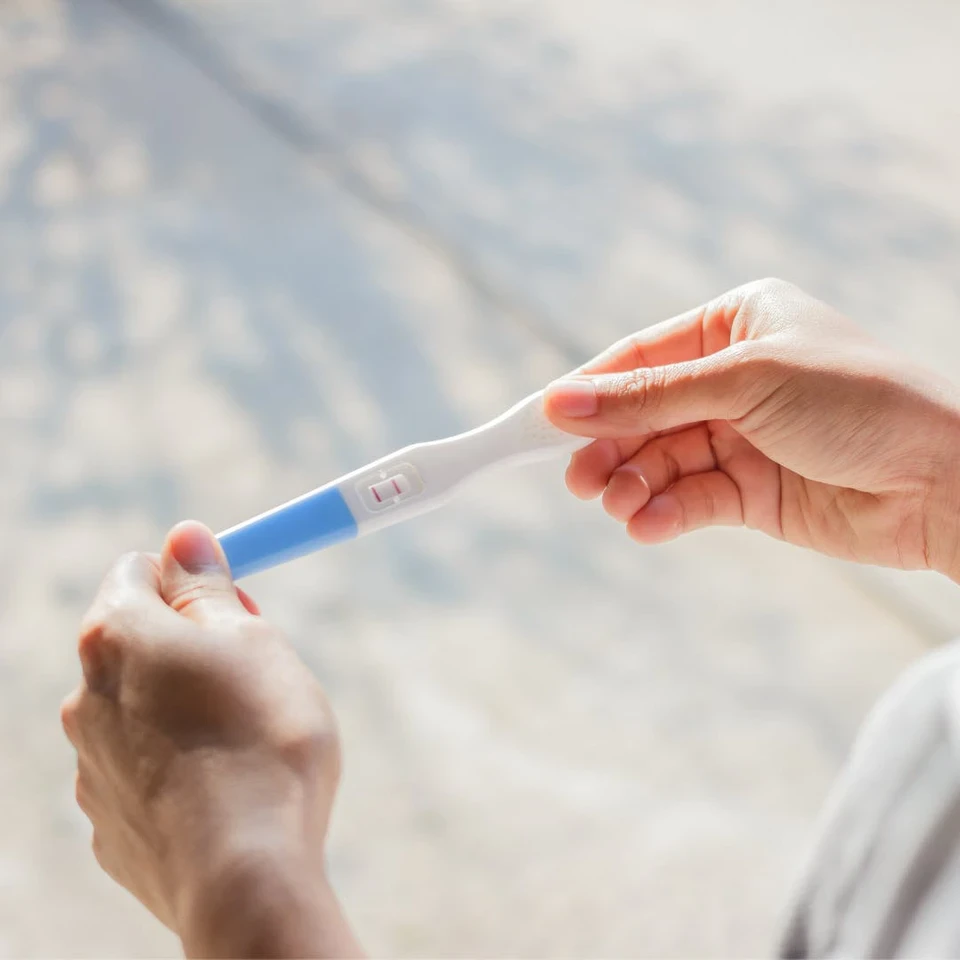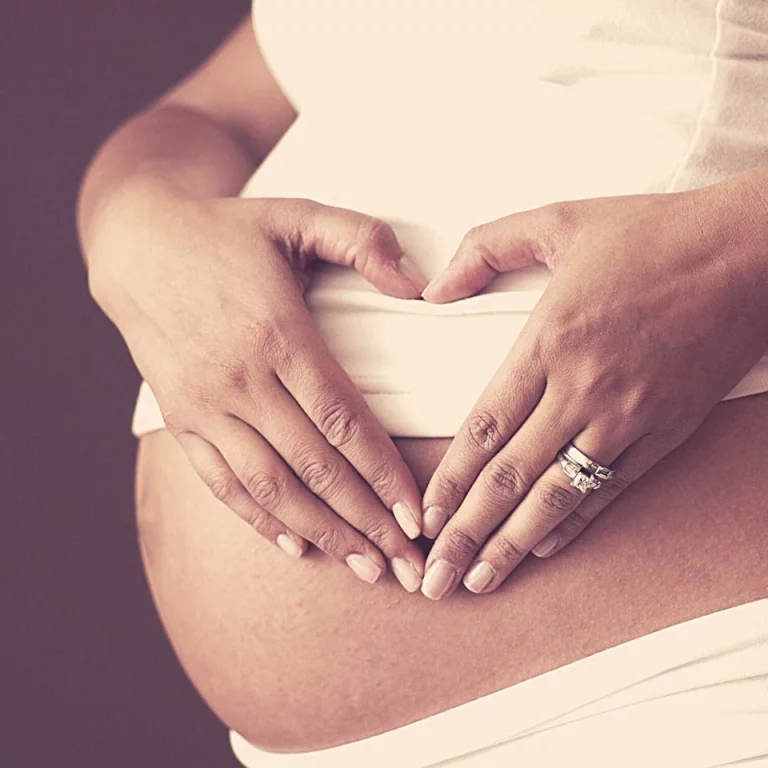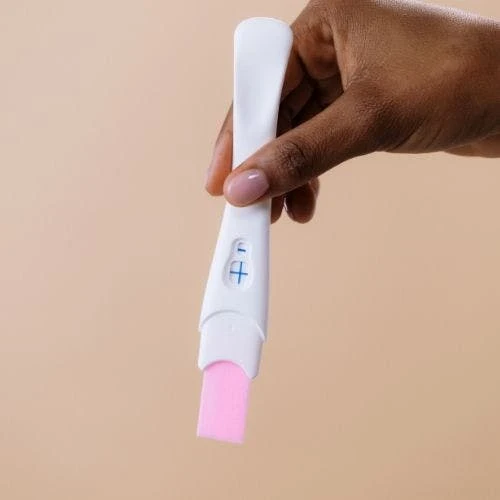Adenomyosis And Fertility
It is controversial whether adenomyosis and infertility are linked because there are several medical factors that can contribute to infertility. For example, a patient commonly can have both endometriosis and adenomyosis at the same time. Let’s start by differentiating the two conditions.
What Is Adenomyosis?
Adenomyosis is a benign condition in which tissue from the endometrial layer (innermost layer of the uterus) grows into the muscular layer of the uterus. This causes the uterus to abnormally grow or thicken. Risk factors for adenomyosis include having multiple pregnancies, miscarriages, abortions, overgrowth of the endometrial layer, endometriosis, and a history of uterine surgery [1,2]. It can cause painful and prolonged bleeding during periods, irregular bleeding between periods, chronic pelvic pain, and possible infertility. Read more about adenomyosis here.
Adenomyosis Vs. Endometriosis
Endometriosis is when the endometrial layer grows into other areas of the body that are outside the uterus, such as the fallopian tubes, ovaries, and even bowel. Endometriosis causes similar symptoms to adenomyosis and it is shown to cause infertility. In fact, almost 4 in 10 women with infertility have been found to have endometriosis [3].
Does Adenomyosis Cause Infertility?
Studies have shown that there is an association between adenomyosis and endometriosis in terms of the disease process [4,5], which is why adenomyosis is an important factor to consider in potential causes of infertility.
Endometriosis has been shown to cause infertility in patients, though studies have not readily confirmed if adenomyosis alone can cause infertility, and studies that are available have only been done on small numbers of cases [1,6]. This poses the question of whether infertility is caused by endometriosis, adenomyosis or a combination of the two. Another factor to consider is that an increased number of women are attempting to conceive at later ages, now in their 30s and 40s, and infertility rates may be due to decreased ovarian reserve (egg supply) as the result of older age, adenomyosis or endometriosis, or a combination of the above [1,7,8].
Various studies have shown that, in general, adenomyosis alone may be associated with a decreased reproductive potential [1,9]. Additionally, adenomyosis is thought to be associated with increased pregnancy complications such as miscarriage and preterm birth [1,6]. Interestingly, patients who have pursued assisted reproductive technology (ART), including procedures such as in vitro fertilization or frozen embryo transfer, have been found to have a higher incidence of adenomyosis compared to the general population [9]. In addition, treatment of adenomyosis has been shown to improve fertility [1]. These associations demonstrate there are multiple factors involved in a potential link between adenomyosis and infertility, though a clear association has not yet been fully established.
Related: PGT Testing: What Is Preimplantation Genetic Testing In IVF?
Adenomyosis Infertility Rates And Statistics
Adenomyosis and its association with infertility is still being studied. There is various conflicting data, most of which state that it is hard to determine the exact prevalence. One study showed that in a group of patients with infertility, 24.4% of those older than 40 years of age had adenomyosis and 22% of patients less than 40 years of age had adenomyosis [10]. Patients seeking assisted reproductive technology notably have a higher incidence of adenomyosis than patients who have not sought reproductive assistance. Some reports show it to be as high as 70% of patients with adenomyosis are infertile [9]. However, another study showed that in patients who were infertile with dysmenorrhea (but did not have endometriosis), 53.8% had adenomyosis [11]. Another study’s results suggested that 24.4% of people with adenomyosis were infertile [8].
Adenomyosis Treatment For Persons Looking To Conceive
There are treatment options available for patients who want to conceive despite having a history of infertility. These include conservative surgery (such as removing the focal adenoma or surgical removal around the uterine wall) [9], hormonal therapies, and even a combination of both. In fact, studies demonstrate that patients who are treated with hormonal therapy before assisted reproductive technology have a higher pregnancy rate [7,9]. A collection of studies showed that 47% of patients with adenomyosis who received treatment were able to become pregnant (including natural conception, surgical intervention, and/or with ART) [7]. In these studies, most of the patients were at an advanced maternal age, with a median age of 38 years.
For younger patients with adenomyosis, who typically have a higher ovarian reserve than that of older patients, pretreatment with hormonal therapy before natural conception is recommended. In older patients with less ovarian reserve, immediate combination ART with hormonal treatment can be used as a first-line approach. There is limited evidence for improved outcome after surgery, and it generally should be an option for patients who failed ART.
If you are concerned that you have adenomyosis, have a diagnosis of adenomyosis and would like to become pregnant, or have other questions regarding fertility, it is recommended to consult your physician so you may work together to find a treatment plan that is best for you.
Authors: Dr. Erika Aragona, Srijaa Kannan
Sources:
- Harada T, Khine YM, Kaponis A, Nikellis T, Decavalas G, Taniguchi F. The Impact of Adenomyosis on Women’s Fertility. Obstet Gynecol Surv. 2016;71(9):557-568. doi:10.1097/OGX.0000000000000346
- Benign uterine pathology. Hoffman B.L., & Schorge J.O., & Halvorson L.M., & Hamid C.A.,& Corton M.M., & Schaffer J.I.(Eds.), (2020). Williams Gynecology, 4e. McGraw-Hill.
- Endometriosis. ACOG. https://www.acog.org/womens-health/faqs/endometriosis. Accessed May 4, 2021.
- Leyendecker G, Bilgicyildirim A, Inacker M, et al. Adenomyosis and endometriosis. Re-visiting their association and further insights into the mechanisms of auto-traumatisation. An MRI study. Arch Gynecol Obstet. 2015;291(4):917-932. doi:10.1007/s00404-014-3437-8
- G. Kunz, D. Beil, P. Huppert, M. Noe, S. Kissler, G. Leyendecker, Adenomyosis in endometriosis—prevalence and impact on fertility. Evidence from magnetic resonance imaging, Human Reproduction, Volume 20, Issue 8, August 2005, Pages 2309–2316, https://doi.org/10.1093/humrep/dei021
- Stewart, Elizabeth et al. (2021). Uterine adenomyosis. UpToDate. Accessed on March 26, 2021.
- Dueholm M. Uterine adenomyosis and infertility, review of reproductive outcome after in vitro fertilization and surgery. Acta Obstet Gynecol Scand. 2017;96(6):715-726. doi:10.1111/aogs.13158
- Puente JM, Fabris A, Patel J, et al. Adenomyosis in infertile women: prevalence and the role of 3D ultrasound as a marker of severity of the disease. Reprod Biol Endocrinol. 2016;14(1):60. Published 2016 Sep 20. doi:10.1186/s12958-016-0185-6
- Dougherty M.P., & DeCherney A.H. (2019). Benign disorders of the uterine corpus. DeCherney A.H., & Nathan L, & Laufer N, & Roman A.S.(Eds.), CURRENT Diagnosis & Treatment: Obstetrics & Gynecology, 12e. McGraw-Hill.
- Vannuccini S, Petraglia F. Recent advances in understanding and managing adenomyosis. F1000Res. 2019;8:F1000 Faculty Rev-283. Published 2019 Mar 13. doi:10.12688/f1000research.17242.1
- Abha Maheshwari, Sumana Gurunath, Farah Fatima, Siladitya Bhattacharya, Adenomyosis and subfertility: a systematic review of prevalence, diagnosis, treatment and fertility outcomes, Human Reproduction Update, Volume 18, Issue 4, July 2012, Pages 374–392, https://doi.org/10.1093/humupd/dms006
We discuss products we think are useful to people. If you buy something through our links, we may earn a commission. Remember to check with your personal physician to see if a product recommended is right for you.








